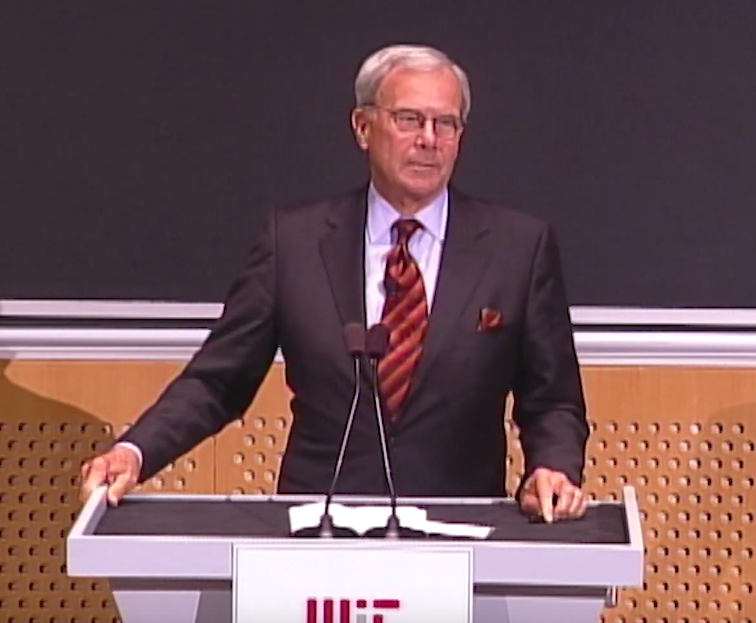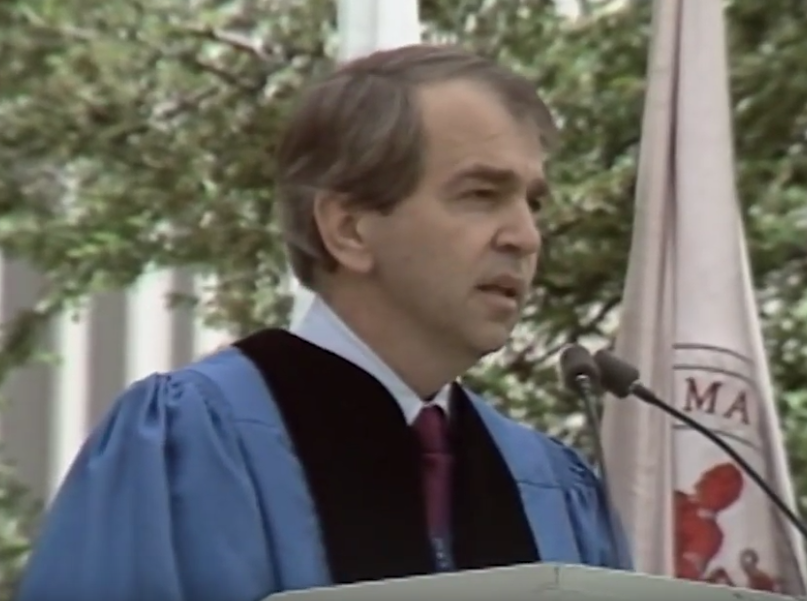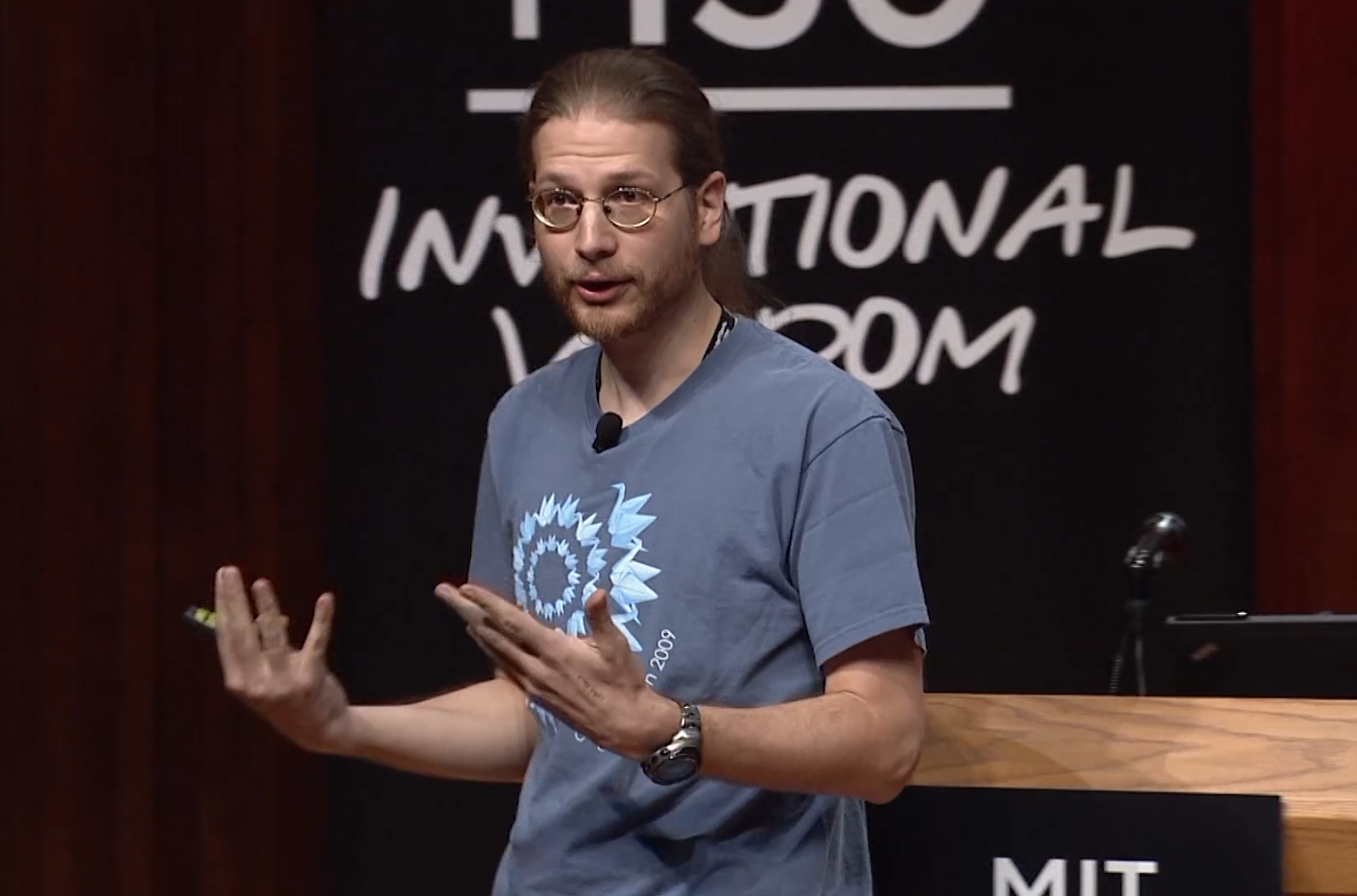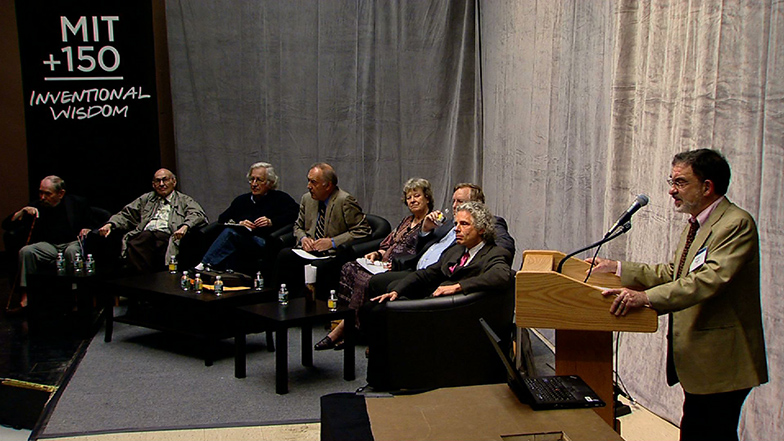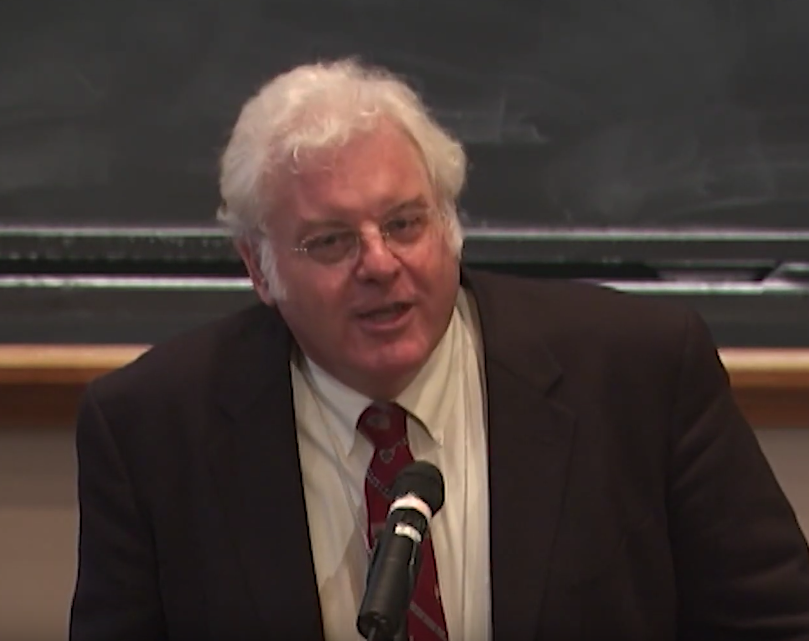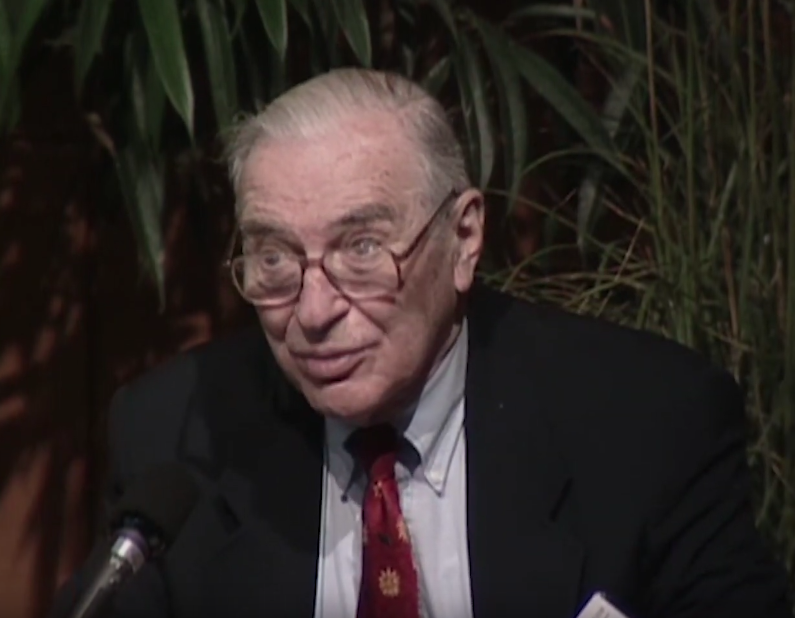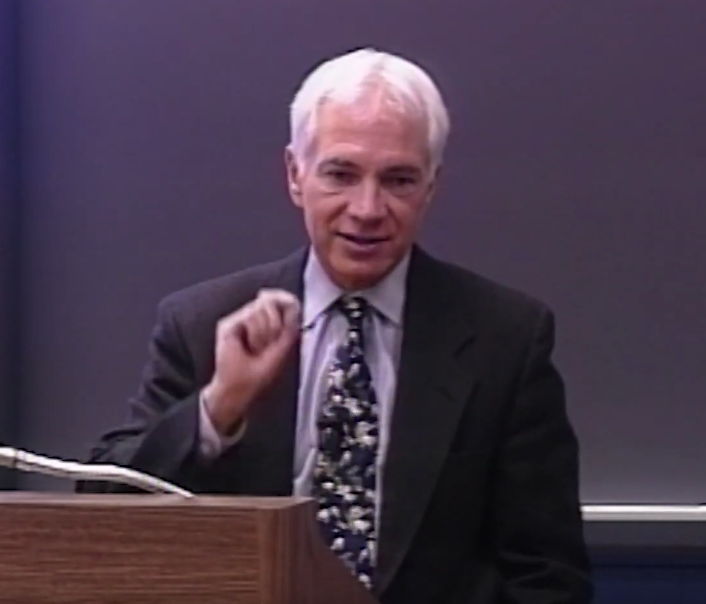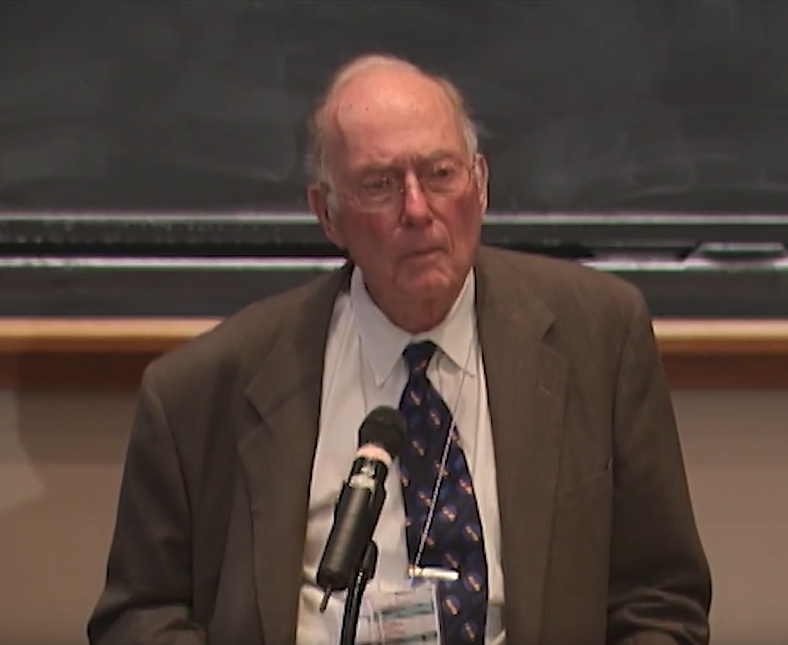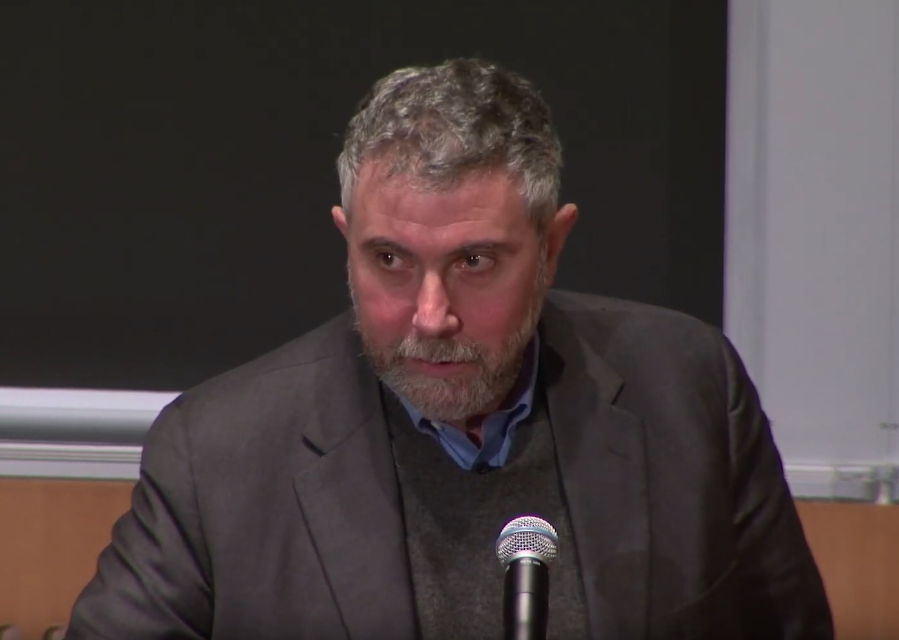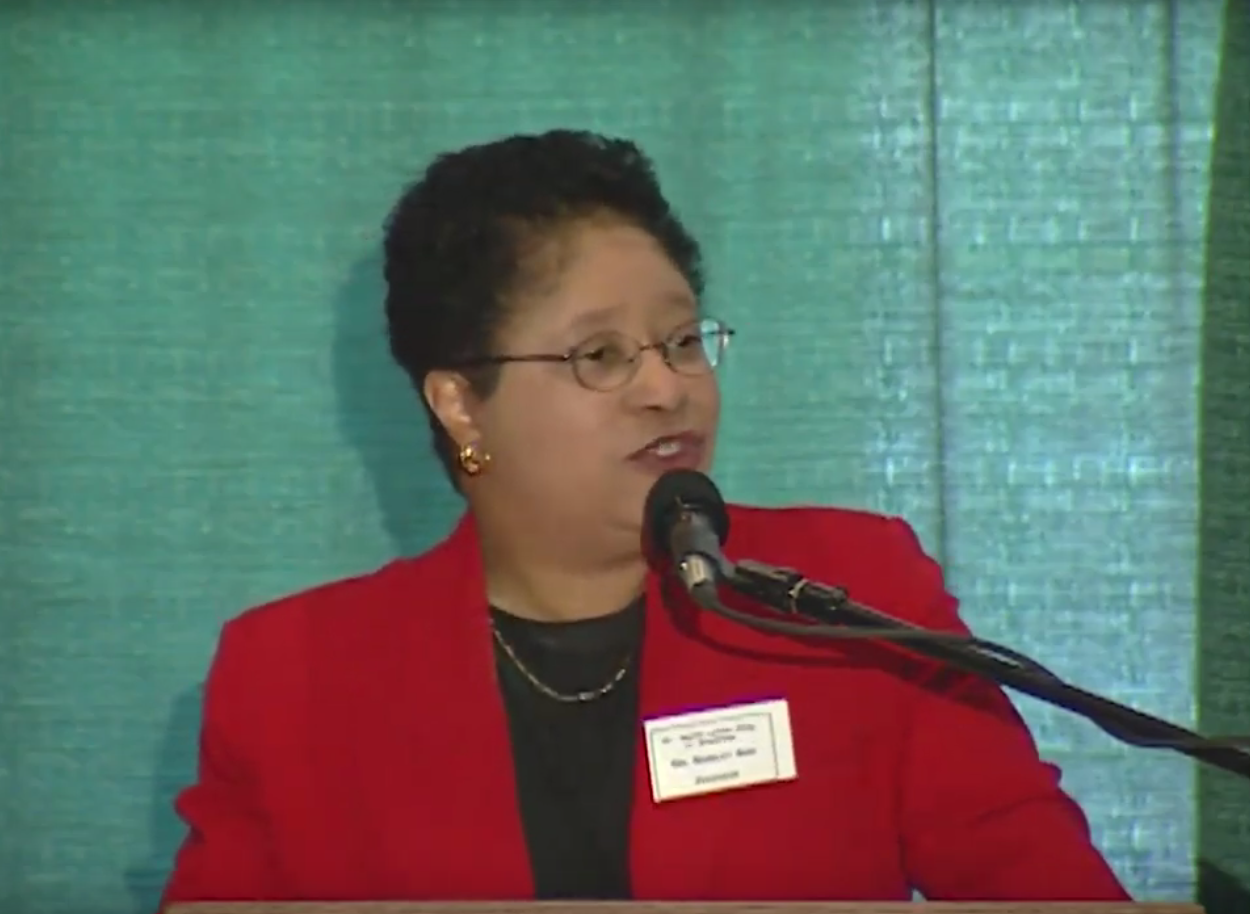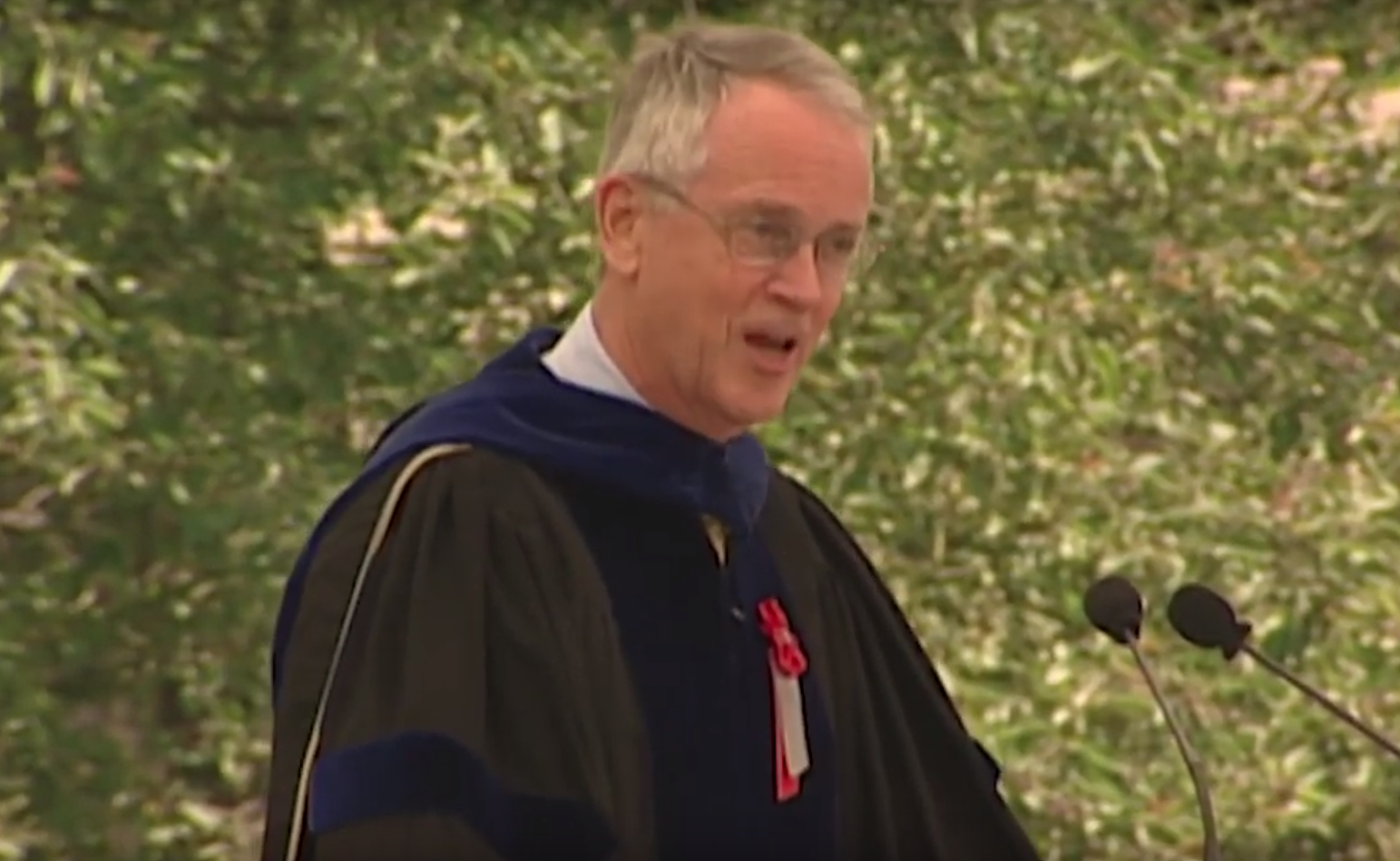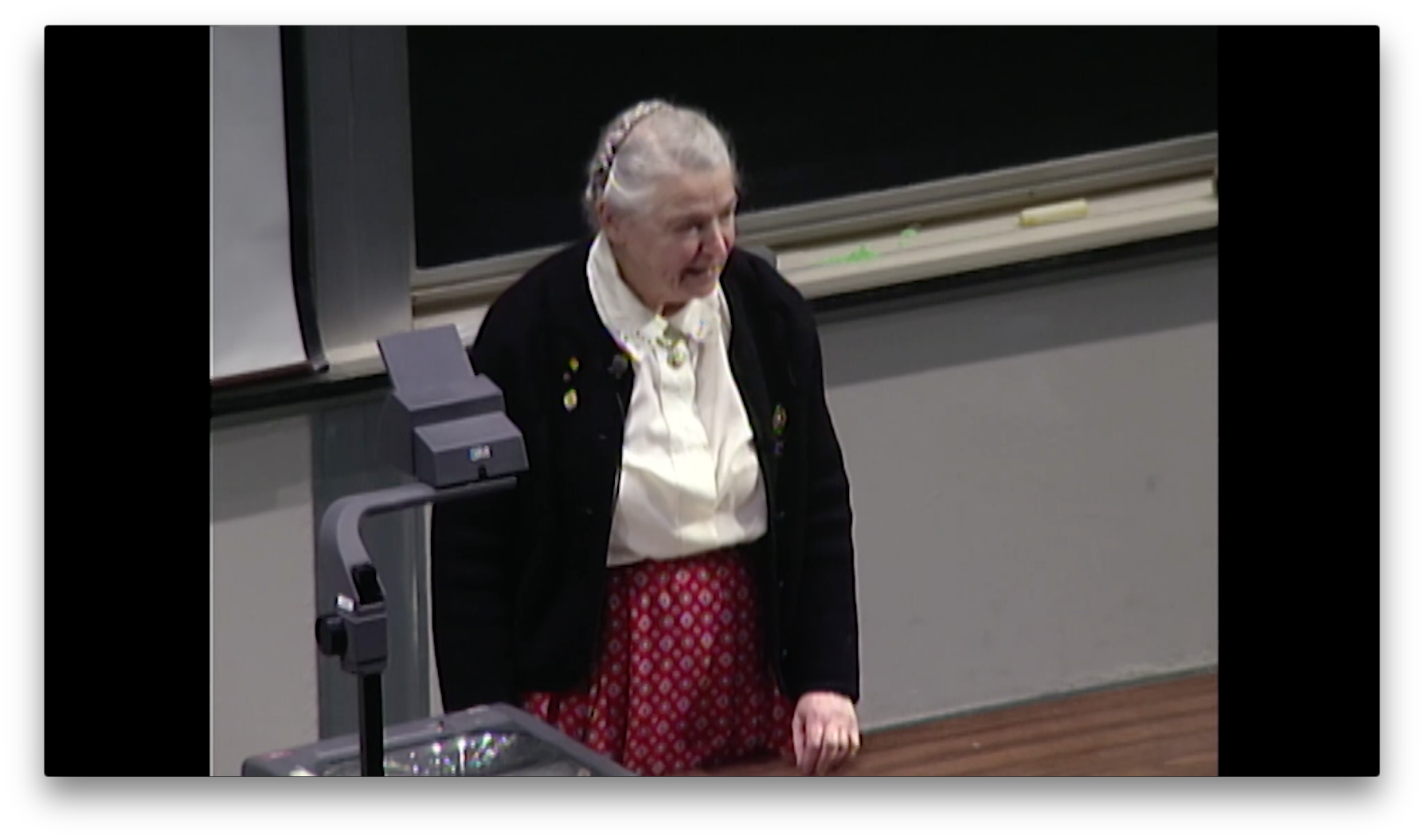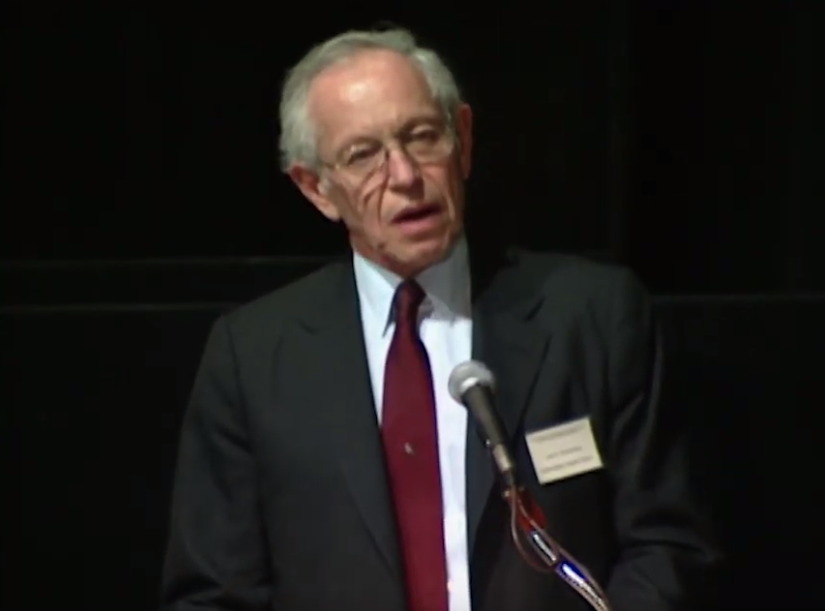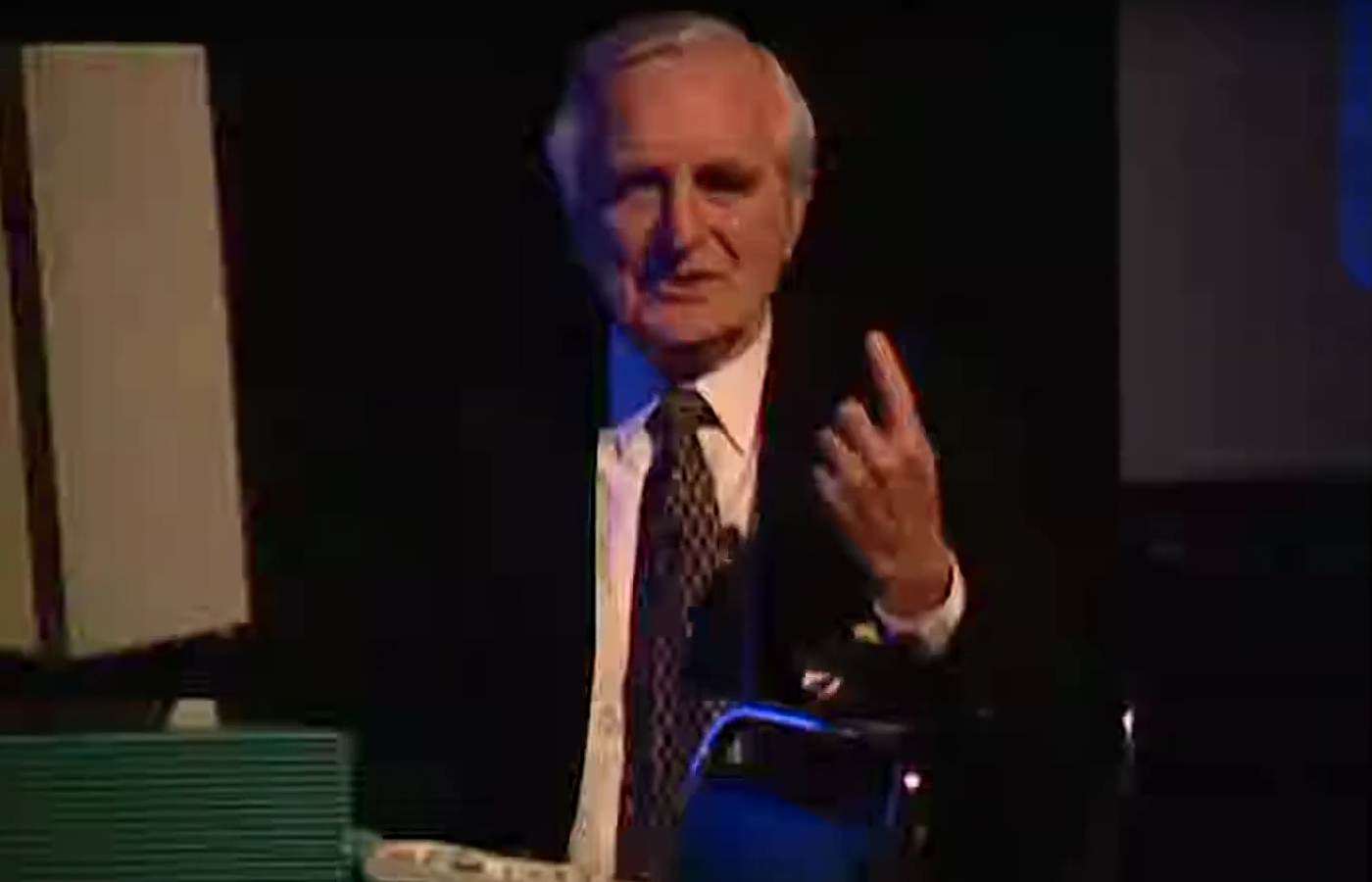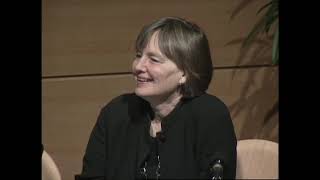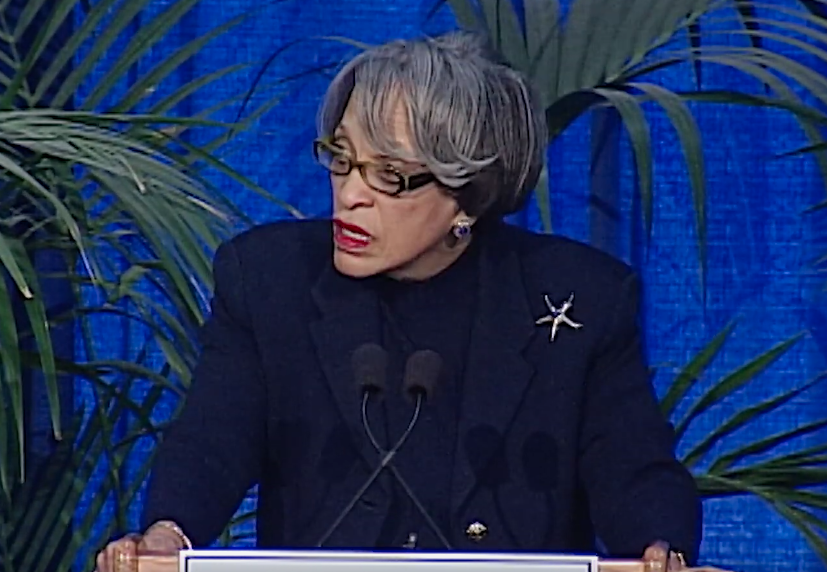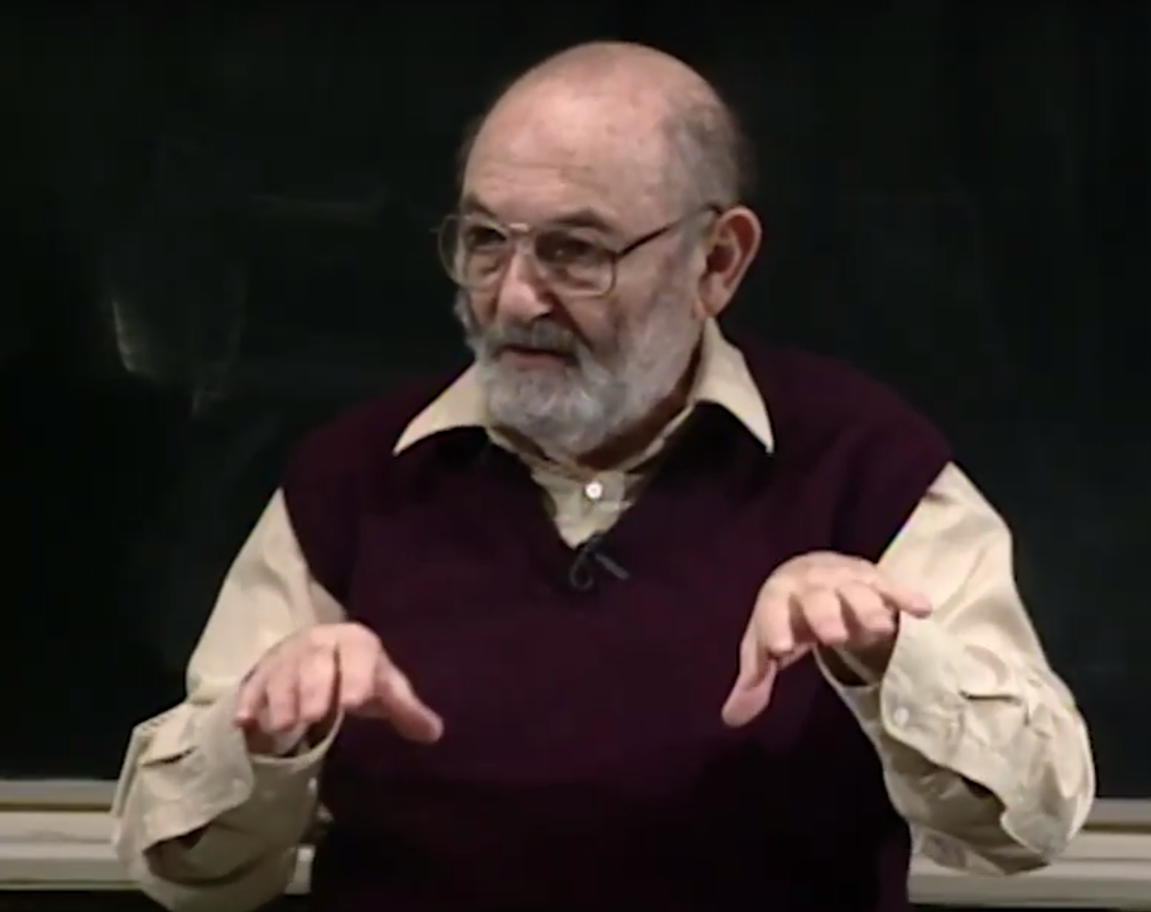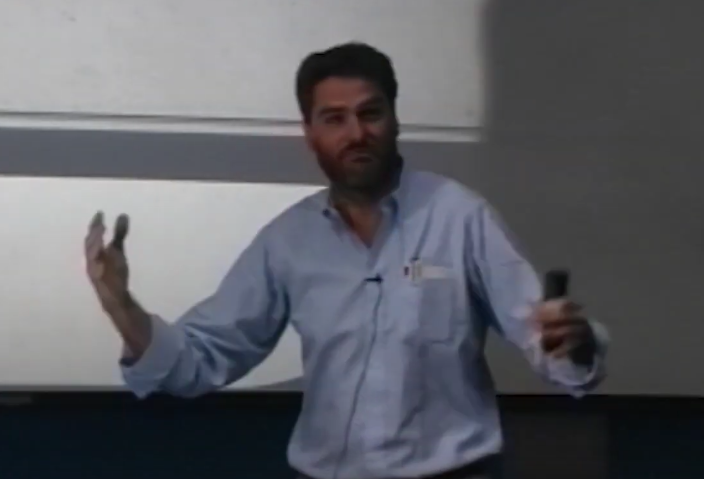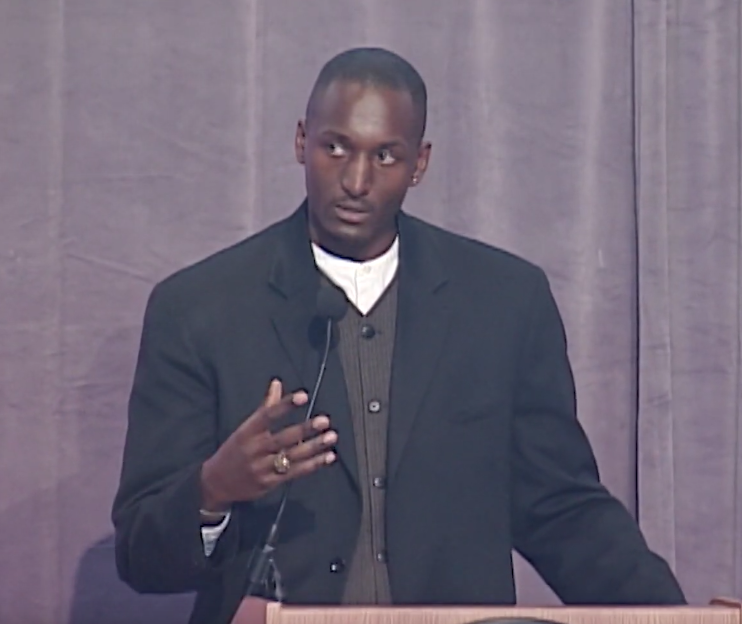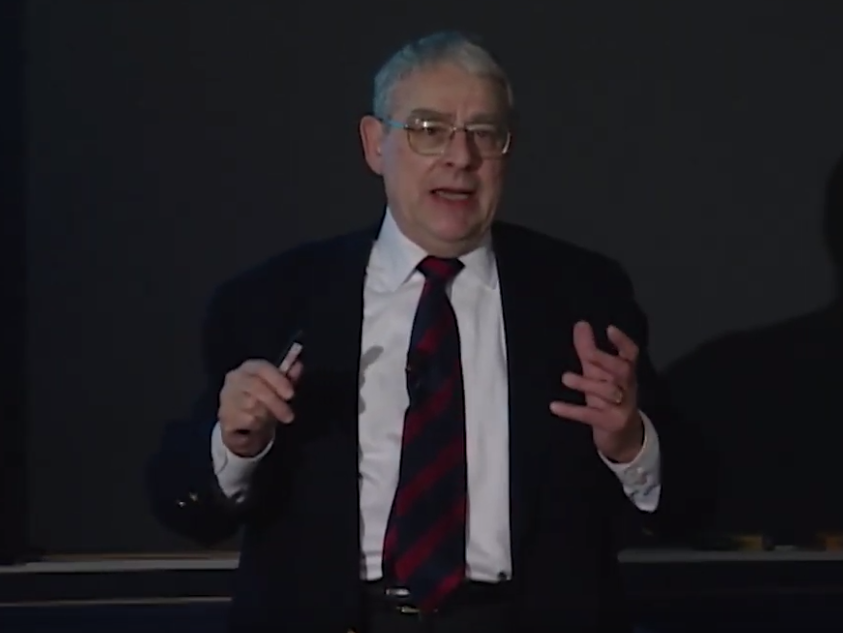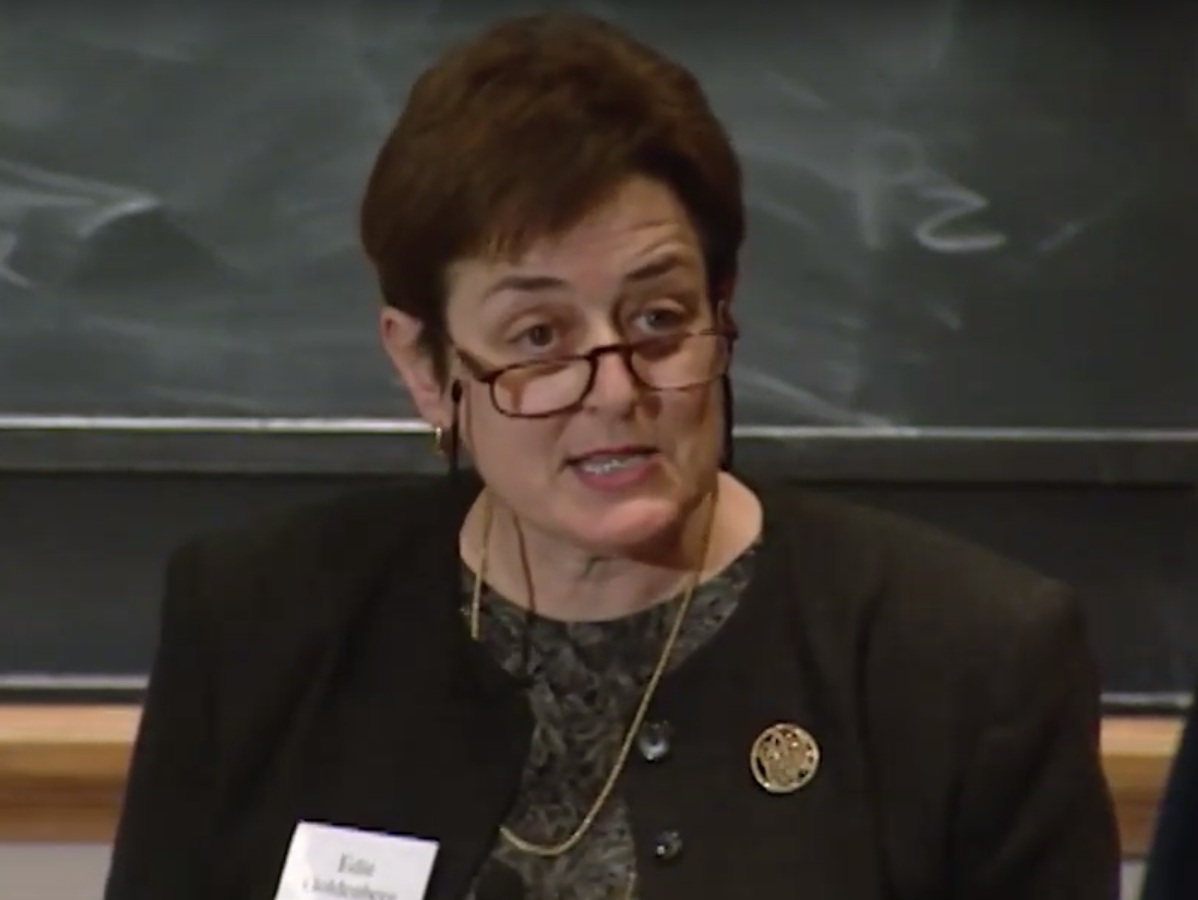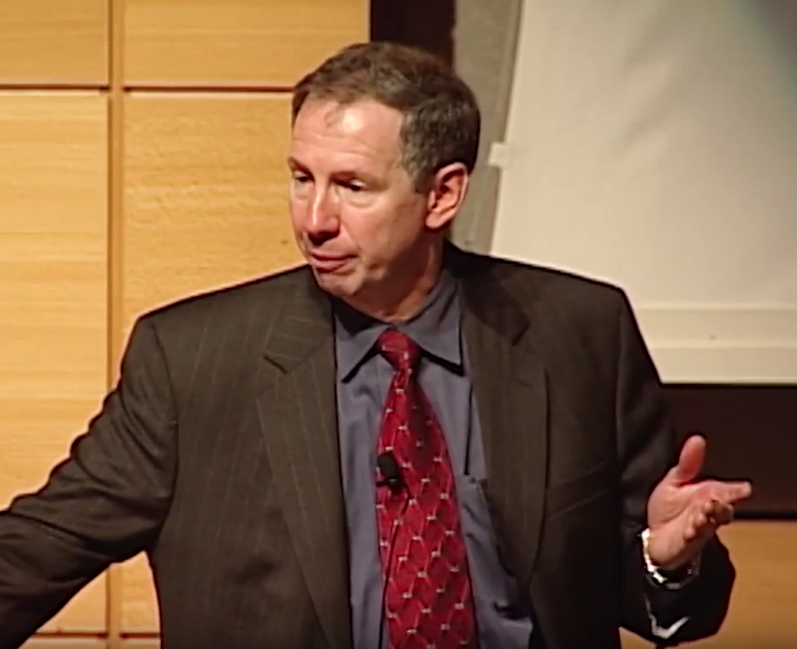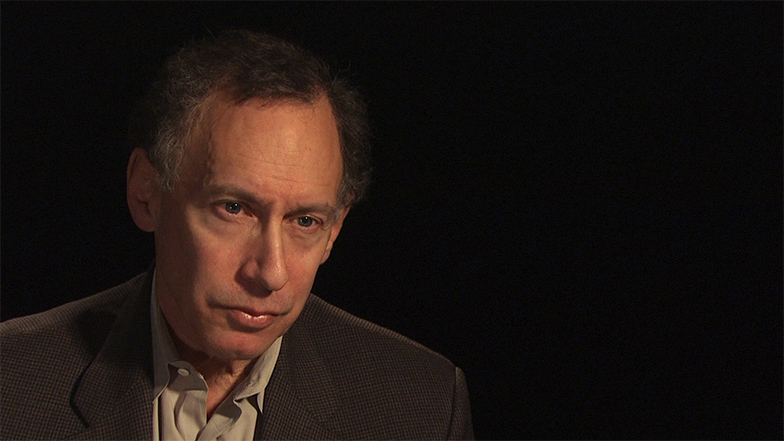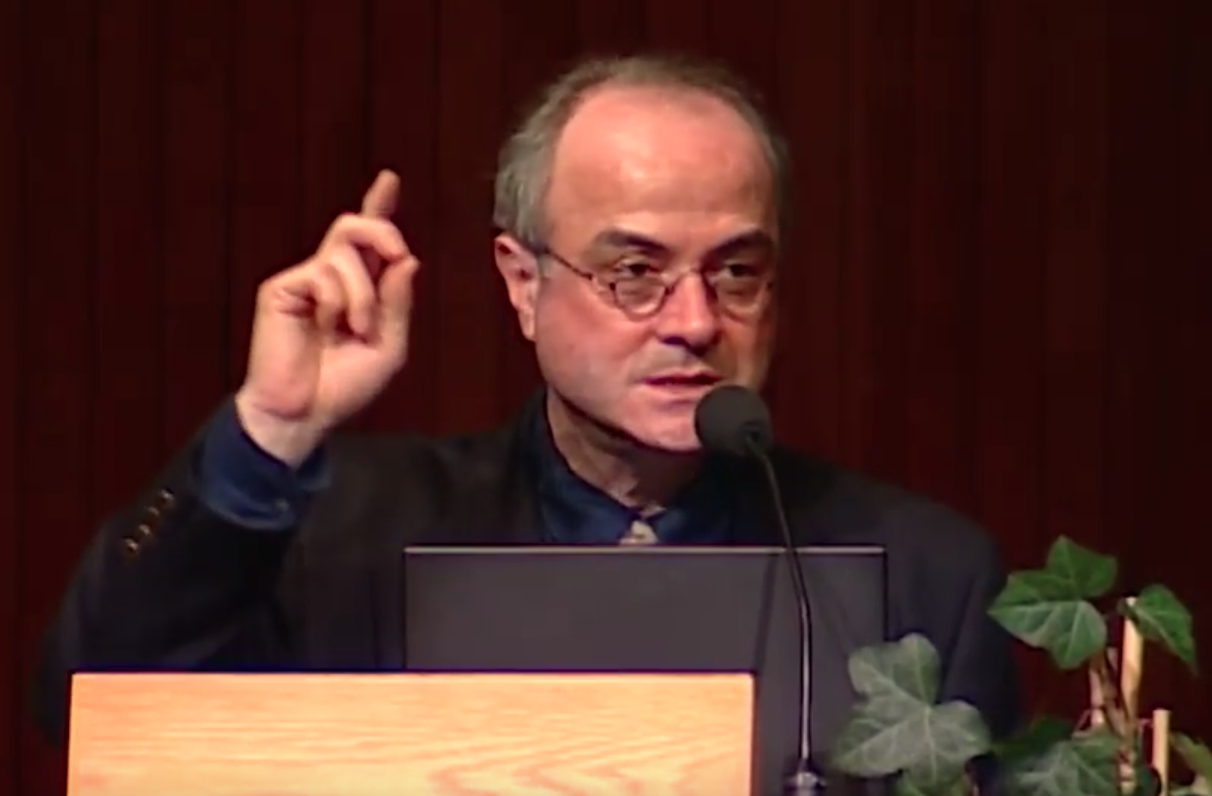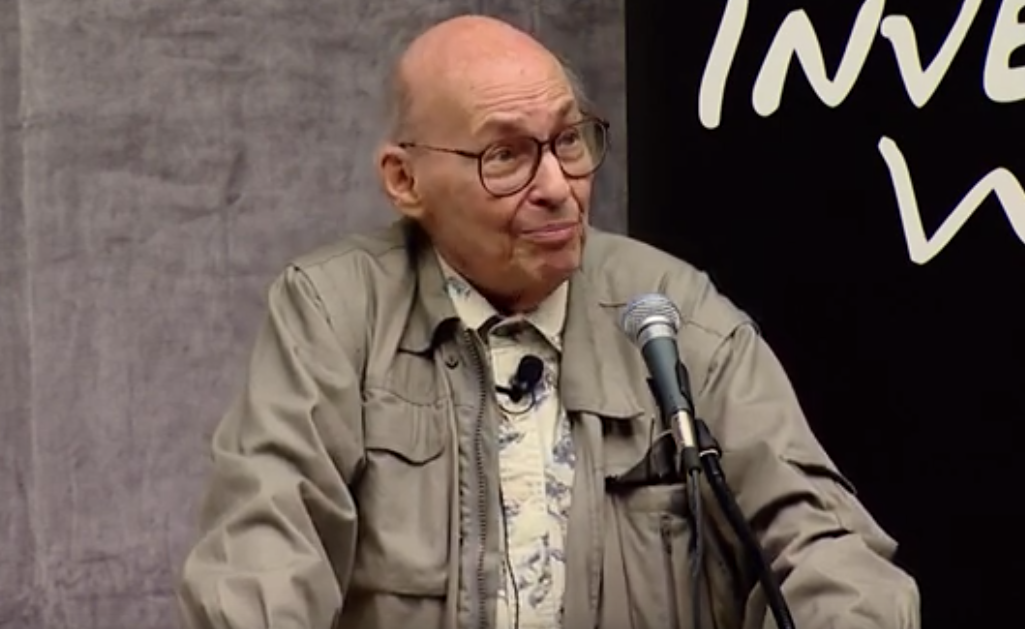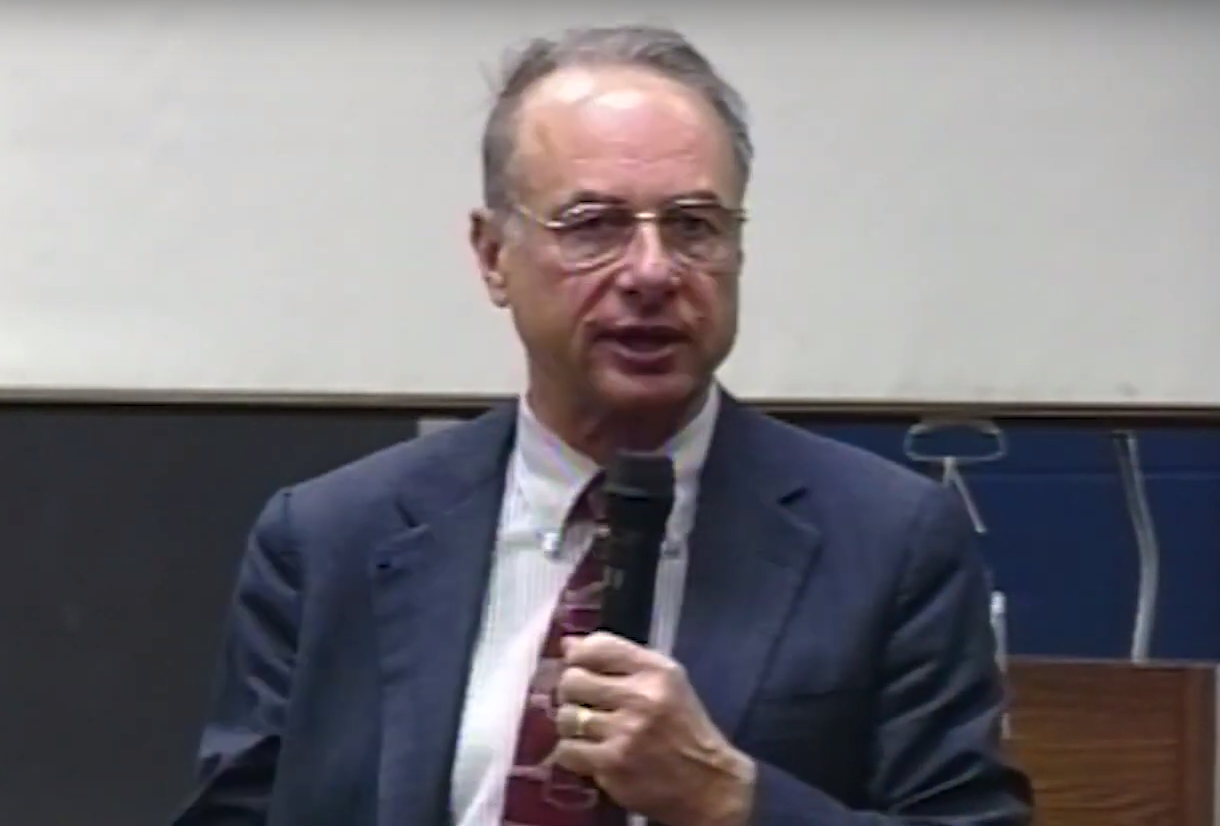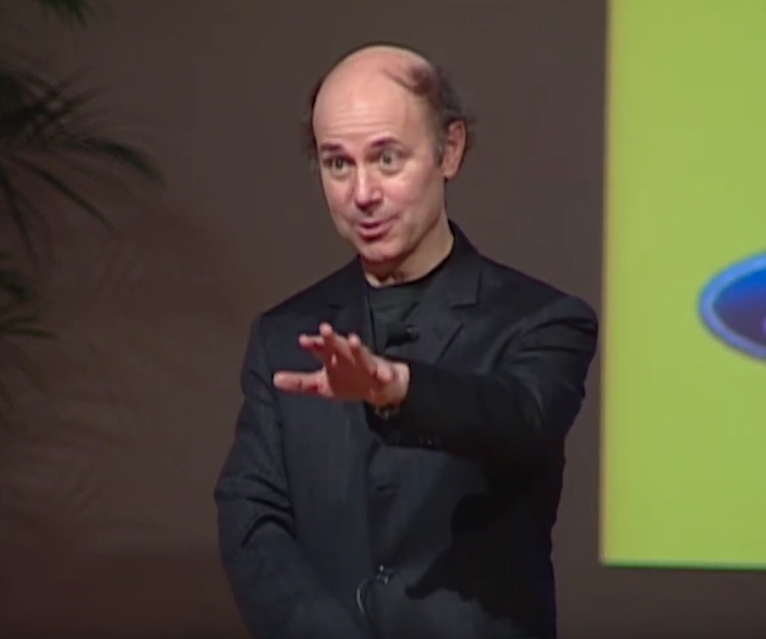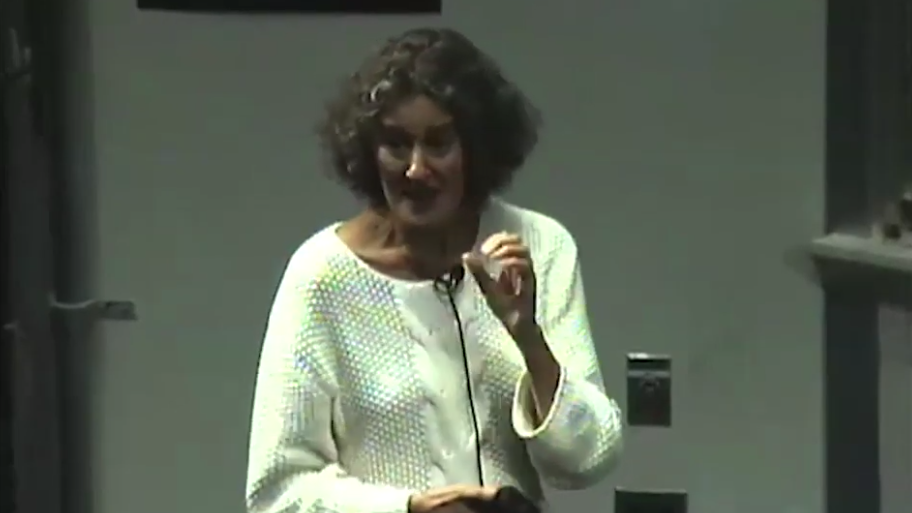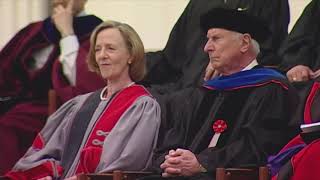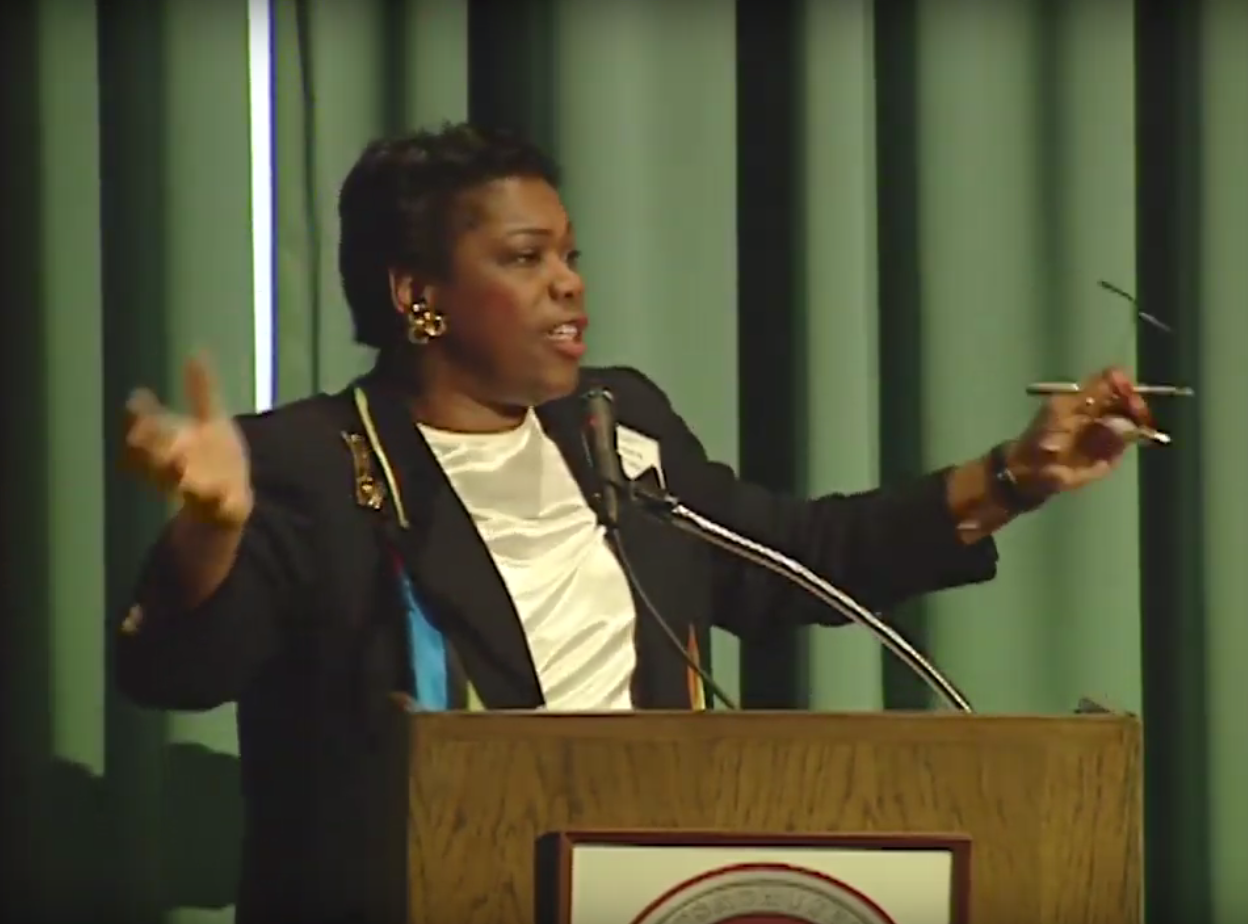Peter Glaser, “Space Solar Power" - MA Space Grant Consortium Public Lecture at MIT (4/6/1999)
[MUSIC PLAYING]
YOUNG: --and fellowships. We have had, in the course of this lectureship, a very, very distinguished group of people, beginning with Bill Lenoir in 1990. And our last speaker in 1998 was Dr. John Logsdon from DC.
This afternoon speaker is a friend of many of ours in this area, Dr. Peter Glaser, retired a few years ago as the vice president of Arthur D. Little, where for many years he founded and for many years ran the space research program at Arthur D. Little
Dr. Glaser was born in Czechoslovakia. Was educated in England at Leeds College of Technology, as he was fortunate enough to escape from wartime Europe. Received his degree there in 1943, and enlisted in the Free Czech Army, which was part of the British Army and participated in the battle to liberate Europe. At one point in the progression through Europe and that battle, the Free Czech Army was transferred to the control of the US Army under General Patton, and went as far as Pilsen at the time of VE Day, at which point peace was declared, they were liberated, and Peter returned to his homeland of Czechoslovakia for a nervous period of three years, wondering what the Russians were going to do about it.
His parents had returned from England to Czechoslovakia. He took advantage of that time to get a second degree in mechanical engineering from the Czech Technical University in Prague. And in 1948, when the Russians did take over the rule of Czechoslovakia with a very firm hand, he was fortunate enough to be able to get out on just about the last plane to the United States with his mother, where he was able to convert his knowledge of mechanical engineering and the $10 in a suitcase that he came to the US with to a job with a textile company doing mechanical engineering in New York.
They thought highly enough of him that they encouraged him to go for an advanced degree, which he did, at Columbia University, getting a master's and eventually a PhD in mechanical engineering. The subject of his PhD thesis, which had to do with particulate matters in vacuum in 1955, turned out to be very key, a few years later, to the issue of trying to understand the lunar surface, which after all, was particulate matter in a vacuum.
And Dr. Glaser was able to contribute a very important contribution to the success of the US Apollo program, and lunar landing program, and the soft landings that took place before it, by analyzing the data that was coming back from looking at the lunar surface optically, and concluding that, in fact, it was not a mile deep of light powder, as had been predicted by some who were doubters of the possibility of being able to land anything at all on the moon. And as many of you know, NASA, in a bold step, went ahead with the plans for soft landing and was able to succeed remarkably.
He initiated and ran from 1955 on to his retirement in 1990 for the space program at Arthur D. Little. Arthur D. Little, over the course of that, put more experiments on the moon than anyone else.
And what he is probably best known for most of us is the invention of the concept of space solar power. He is the author of a book, Solar Power Satellites, published by Wiley in 1997. And those of you who read Technology Review may recall that his concept and his design was on the cover not too long ago. The issue of space solar power has once again, like a phoenix, arisen. And I think it's something that we will be wanting to pay a great deal of attention to. Without taking any more of his time, I'd like to introduce our distinguished speaker, Peter Glaser.
[APPLAUSE]
And I'd like you to wear a-- I'd like you to wear both--
GLASER: Sure.
YOUNG: --[INAUDIBLE] for television. [INAUDIBLE]. This is for our [INAUDIBLE].
GLASER: Thank you very much, Professor Young. Ladies and gentlemen, students and visitors from the faculty, it is a great pleasure for me to address you on a topic which has occupied my interest for more than 30 years. I will try and, in my presentation, show you the slides, because they do a far better job than my speaking to you, to show you that the concept that I have proposed publicly for the first time in 1968 is indeed worthwhile studying.
And I'm pleased to share with you that today, this is of major interest internationally, and is being taken seriously all over the world. I will show you slides which hopefully will illustrate some of the points that I would normally want to make, and have you get a feel that what some people call science fiction is actually the reality in your lives. So if I may--
AUDIENCE: [INAUDIBLE]
GLASER: I wanted to just start-- this is very short quote from Stephen Jay Gould, because we should not take for granted that the presence of humanity is guaranteed on planet Earth. And basically, my feeling has been for these many years that behind this is the capability to utilize appropriate energy sources, find effective uses for the energy, and at the top of my list is to safeguard the Earth's ecology in the broadest sense that it can be done.
The point that I make here is that we are in a different world in the 21st century, because we have to increase the living standards of people. We have to stabilize population growth. We have to safeguard the ecology. And we have to avert the specter of future wars. And how easy it is to start a war, we are seeing right now.
There are two aspects here that we have to bear in mind. First of all, global population, which is just about 6 billion. To put this into perspective, when I was in high school, there were 2 billion people on Earth. We expect, by the middle of the century, to be at around 9, and towards the end, perhaps 14.
Now, as more and more people increase their living standards, they need to use energy, although we do the best we can to minimize the wrong way of using energy. And if you look at terawatts of energy, we are around 14 now. We would be around 27 by mid-century, and 42 at the end. These are unimaginable numbers based on what we now believe we have as energy sources. Totally unimaginable.
This is a very simple example here.
AUDIENCE: [INAUDIBLE]
GLASER: Oh, yeah. Thank you. A very simple example. 5,800 million tons, 1950. 18,700, 1985. And we now project 28,600. And the most interesting aspect is that the developing countries will use half of the energy in the world. And I always find that people don't realize that there are only two countries which really are important in the next century. One is China, and the other is India-- purely on population.
Now, the number of energy economists who try and predict, when will we get to this highest point-- now, some say we've already passed it. Some others say we will probably get it by 2010. And only a few say it will reach it by 2020.
It is nearly immaterial when the actual point will be reached. We have learned how to live with an ever-increasing availability of energy. We have no idea what we will be doing as it is decreasing. And here's 2000-- it's this fairly rapid decrease that we have to worry about. There is nothing in sight that will allow us now to say, we will have the energy we need without destroying the ecology of the Earth.
Let me just show you the problem we are facing. If we utilize oil, gas, nuclear, it has already upstream effect-- you know, coal mines, et cetera. We need water for electric power generation. And look, all the things that are happening in the air, in the water, on land. And if it's nuclear, we have the storage problem. So please keep that in mind, that those are the issues that the conventional-- and I put nuclear among them-- have to face.
Now look at the CO2 emissions. In the CO2 emissions, coal is, of course, the greatest culprit. Oil. LNG. And only low ones are nuclear and solar power satellites.
Now, those of you who have studied nuclear power realize that it is a clean source up to a point, because where the difficulty arises-- we generate plutonium in the process unless we have developed fast breeder reactors, but even then, we have some problems. Fusion is certainly a very interesting possibility at some time in the future.
And I am a simple-minded engineer who says, I'm 100% for fusion. 100%. Because I can now use an existing fusion reactor, which we call the sun.
[CHUCKLING]
What happens with CO2? Well, I like this cartoon because it does indicate that we have a problem ahead of us. And this is a United Nations study which came up-- there's the results. What are the effects of sea level rise on people living in the Pacific?
Now, you see the profound impact, and so on. There are about 300 million people affected by this. Now, please imagine if we have a problem with the Kosovo Albanians, and finding ways for them to live. What would we do with 300 million people, and finding other places to live?
All of that is not old stuff, actually. All of this was already known in the '60s. And it was because I was in a very fortunate position at Arthur D. Little that I was able to work with people who knew all about power beaming, or wireless power transmission. Raytheon was our neighbor. And so I was able to come up with what people then said was obviously science fiction.
And that's a first artist concept that we have solar cells-- this was a disk which rotated so that we had very thin films. The power was fed to transmitting antenna and directed back to the Earth, where the power could be safely and very efficiently, again, converted into electricity.
Now, that's the exact slide I used in '68, and I have not changed my mind at all in terms of what are the criteria. Technical feasibility, economic attractiveness, ecological impact, social desirability, political implications, and public acceptance. That is what I believe all the things that we have to do when we develop new energy sources.
Now let me go back in history. I'm an engineer, and as an engineer, I've been taught over the years, a good engineer basically has to be somewhat lazy. Because he has to look, where are some good ideas that some of the physicists came up with so that we can adapt them?
Well, here is one physicist whose name you know-- Tesla. Because Tesla wanted-- in 1908, he built this tower with money from Mr. Astor. And what he wanted to do is beam power. Now, he didn't quite succeed because the technology wasn't there, but he was on the right track. And of course, you realize that without Tesla, we wouldn't have all the lights that we enjoy now.
The other major interesting device which was developed by Raytheon was a microwave generator. Now, this device, all of you know. You use it. Most of you use it every day in a microwave oven.
Now, we've got 300 million ovens in use now. Tremendous saving in energy. Now, in space, if you want to use wireless power transmission for use in space, we don't need glass enclosures. We don't need any of that stuff. And what we are left are those two little things-- the magnets and the innards of a microwave generator.
The second thing that we need is a way of converting microwaves directly into DC, which was considered an impossible task quite a few years ago, except a very good friend of mine, Bill Brown-- who worked at Raytheon, who unfortunately died just recently-- developed a dipole rectifier which converts the microwaves directly into DC. These are dipoles, and here are the solid state devices which do this job. Now, what you're looking at is one of the first microwave converters, the beam converters, hyporeactive [INAUDIBLE].
Bill Brown-- I think it was 1954-- had an assignment from [INAUDIBLE] Air Force Base to be able to build a helicopter which would stay up forever if power is provided from the ground. And lo and behold, he demonstrated that this helicopter-- here are the blades-- was able to fly as long as power is provided to it. A remarkable demonstration.
He also showed that this is a very efficient way of transmitting power. DC-to-DC conversion, microwave beam-- let's see, am I focusing this? The microwave beam and the collection. And if you look at all of this, at that time already, it was about 55% efficient. That is from DC to DC.
Now, you may recall that we've learned how to produce very large antennas. In order to give you an idea of what the size of this antenna is, this is a truck here. So we know we can build phased array antennas, as these are called. They're used by the Air Force in various places.
AUDIENCE: Where is that antenna?
GLASER: That's in the Arctic region. Alaska.
So back in 1970, with all this knowledge base, I had the temerity-- because my boss was, at that time, General James Gavin-- to be able to meet with the NASA managers, and just explain to them what a solar power satellite could do. And NASA felt that indeed is a project of great interest to them. And what they decided is to study this. And there was a team that was formed with Arthur D. Little, Raytheon, Grumman, and Spectrolab, part of Textron. You see, I had people in the east who I knew who would work with us.
And this was the first large-scale SPS system that was designed. Solar cells on a large platform. This is a antenna. And the only moving part is the antenna, because as this is in geosynchronous orbit, once a day, would have to move with respect to the Earth and the bearing.
Now you're looking at the underside of the phased array antenna. This is where the wave comes out, microwaves. Here is the device which produces the microwaves. The microwaves are then fed into the rest of the antenna. And these are cooling devices that it rejects any waste heat to space.
Here, you see the antenna on the ground. Please note that this is semi transparent, and we can still use the land underneath the antenna. It's a large ground area that we need, and we use a safety zone. And I'll have more to say about that.
Well, this is-- as you can see-- the NASA SPS system circa of 1975. It's a very large-area receiver. And this is a area with electrifying antenna. I was concerned that NASA went a bit overboard because it was too large, and the output of this was 5 gigawatts. Now, that's a very respectable energy output.
Now, if you recall the previous slide that I've shown for fossil fuels, this is the same slide now applied to satellite power systems. Much simplified, and all the problems that you saw with the others, there is nothing happening on Earth in terms of waste products.
There's a lot of science and technology behind this. I just wanted to show you that it's fairly basic to understand what we need to do in terms of sizing. That's a parameter called tau, and it's equal to the square root of the transmitting antenna and the receiving antenna divided by lambda, the wavelength and the distance between the transmitting antenna and the receiving antenna.
NASA realized that we need to have large launch systems. And therefore, they've studied sea launch. And that has not been forgotten, because there's a company which wants to do that now again.
Nobody believed that this can be done. They said, well, these are just paper studies. How in the world would you really show us that this can be done?
And so NASA allowed us to use Goldstone in 1974. And this Goldstone antenna site, we had Venus antenna that we could use. That's Venus-- sorry, I got to get back here. That's the Venus antenna.
And we put a microwave-generating device at the focal point, and then beamed from there to a receiving antenna on this large pole. And we had lights connected to it so that as we moved this antenna, we could show the lights dimming and so on, indicating that we were getting power.
This is a view of the receiving antenna. And people ask me about, why didn't you complete it? Very simple answer. We ran out of money.
These are the lights. And as we moved the antenna back and forth, you could see the lights dimming and getting brighter.
There were questions, of course, asked. Now, what if you do something to heating up the ionosphere at the wavelengths that we are talking about, 2.45 gigahertz? By the way, it's in the ISM band-- Industrial, Scientific, Medical band, so they don't interfere with other people. And the concern was real. We didn't have the answer at that time.
So what we did, we managed to get an experiment in the Arecibo large dish. And we had a diagnostic radar in this location here in Guadalupe. And therefore, we were heating the ionosphere by putting energy into it-- microwave energy. You see, here's the microwaves being reflected by this huge dish, 1,000-foot antenna, going up through the ionosphere.
And the radar showed us, it's not heating up. Well, that was a great relief to all. And I think by then, we had enough information, and NASA had continued working on this till 1980.
In 1980, the Department of Energy said, well, we already believe that beyond this time, we will have nuclear power totally available in the United States, and all of our energy will come from nuclear power. Furthermore, they said that in 10 years, we will have demonstrated controlled fusion. So essentially, NASA was told, well, you don't have to work on it, and we'll do these other things. And we're still waiting for controlled fusion, of course.
In 1986, there was a big study by the National Commission on Space in Pioneering the Space Frontier. And here is the key statement-- what their ambition is. "Opening new resources to benefit humanity by combining energy of the sun with materials left in space during the formation of the solar system." Now, what that means, going to the moon and building stuff on the moon itself.
Now, there are a lot of experiments and work that was ongoing then, and we were able to show, if we would have experiment with a shuttle, we could learn a lot and demonstrate how this works. And we were going to use a Spartan free-flying platform which would beam to the shuttle. This was done with the Space Center at Texas A&M University. And we thought we nearly had permission to use a shuttle, but then they wouldn't allow it.
Because of the interest in all of this, there was several other places where microwave power transmission was of growing interest, and one was in Europe. Europe has made a study that they cannot rely on renewable energy sources. And the only sources they can have are either nuclear or coal.
And none of them-- remember some of the problems of nuclear in Russia, et cetera-- were attractive, so they said, what we'd like to do is take some of the power from South America. And for example, Venezuela has a Guri Dam which has enormous capacity. And also in Brazil, and various other places.
So they said, all we need is to have a reflector. And that reflector, then if you generate power from various sources here, that reflector will beam up and will reflect back. And we had a space in Spain allocated to this, and it looked like a very interesting project, but the Europeans found out that it'll cost more than they wanted to spend on this, so they didn't go ahead with it.
Now, there's another aspect to all of this. And that is, where do people live? And we have studied the possibility of putting these receiving antennas not on land, because it takes land which might have to be used for raising food, but we put it in the ocean. And this shows you the size of a antenna for 5 gigawatts in the ocean.
And it has a dual purpose because we can use it as a fish farm. If you want to have salmon these days, it doesn't come from the rivers much. It comes from, I guess, Norway, where they fish farm salmon. So here, we have the possibility of dual usage. This just indicates how we take care of the environment at sea by having our dipoles and other stuff encapsulated, and it's supported there.
Now, this was not just a hypothetical experiment. Let's see if I can get this [INAUDIBLE] go back here. Can you--
AUDIENCE: [INAUDIBLE]
GLASER: Come on. Oh, thank you. That's great. There was a big conference on ocean cities in '95. In fact, there's another one slated. And what's interesting, we mentioned about the population growth. All of the attendees said, we can't have all these people living on land. They have to live in the ocean. And that indicates to you, as I believe.
A typical question that people asked, how do we control that beam? "A little to the west, Harry. We almost lost Detroit." And I think it's rather important to understand, this is not a death ray. This beam has enormous energy which it can provide.
But look at these numbers. The power density at the edge of the antenna is 1 milliwatt per square centimeter. At the fence line, it's 0.1 milliwatt per square centimeter. And we expect that by the time we have it done, it'll be down to 0.01 milliwatt. Now, if you live in New York or perhaps Boston, this gets to be what you're exposed to from all the devices that you're using, particularly when you're listening to them on a phone.
I just thought I'll show you the microwave field exposure guidelines. The OSHA is-- that industry uses large amounts of microwaves for various purposes. And there are about 8 milliwatts, and different organization, let's say, go down to 5. And the public is exposed to 0.5. Well, that's not too far removed from what we are talking about for the buildings at the edge of the antenna. The only group that has been very low is the USSR. And this is a purely hypothetical level, which of course, they never achieved.
If you use a microwave oven, you might be interested what you're exposed to. And if you look at the 1 milliwatt, you'd have to be within-- what-- less than a foot, 6 inches of the microwave oven. By the time you get 4 feet away, you really are at a very low level which you cannot be concerned about. And that's basically what we expect will happen at the receiving antenna as well.
Now, somebody asked, well, what if it fails? Well, here is a failure mode. Eastern European standards, and total failure. And this is partial failure, and the total failure would be around this level. Again, there's nothing that I believe needs to be done at that level. And we, of course, have some control over the things in orbit as well.
Nobody believed us. You remember my offer of the goose flying? Nobody believed us that birds can fly through the beam and nothing happens to them. So we worked with a Boston University ornithology center, and studied with them the type of behavior on what species, the exposure and flux density, and so on. And do they have any effect? We looked for all sorts of effects, and the upshot was no effect visible.
Now, if we have a power density at great distance, we would be at around-- oh, gee. I want to go back here. Now I'm going the-- how do I get it back? The second button? Yeah, thank you.
10 to minus 4 milliwatt per square centimeter is sort of-- we really are along a great distance away at that level, no concern at all about microwaves. There have been many other uses of this kind of approach. One is a high-flying aircraft which I've been studying again-- actually, this was for the Air Force some years ago. And it looked like a very interesting approach.
Now, the Japanese and many other countries have followed very closely our work. It isn't classified, and everyone can write papers about it. And in this International Space Year, they arranged to fly this kite, so to speak. And they had a Nissan truck. And this thing flies. And here is the device which makes it possible. It's on top of the Nissan vehicle. And the airplane. And therefore, as long as you provide power, the airplane will fly.
The Canadians worked on it. They called it SHARP-- stationary high altitude relay platform. All this is for communications purposes. And this round thing is the receiving antenna. It's done by the communications department in Ottawa. And it flies.
The Japanese started to work on this probably in 1973. I had the pleasure of meeting these people there in 1974 in Tokyo. And they really felt that this was the answer to their needs.
They came up with what's called the SPS 2000 project. And it's the same idea. You beam from solar cells, and you beam back to Earth.
And this wasn't a hypothetical. As you can see, they actually started to build these structures, and trying to understand how to design those kind of structures. They had a visit of various people here, a whole group of them, and the interesting Japan External Trade Organization, to talk about their R&D, and what we are doing, and what can be done.
Another thing that has happened in Japan is dirigibles. If you want to have a dirigible to stay up forever, what you do is have a transmitter which sends a signal to the array. Produces power so that it's kept up there. And there it flies forever, if you'd like to have it fly, doing all the things from the altitude-- for example, communications.
Another thing that the Japanese did, and I think a very interesting project. This was a rocket on which they mounted transmitters and receivers of microwaves. These are just some of the details of it. Again, we worked with Texas A&M on it, and they developed dipole rectifiers which are two-dimensional.
And now you see the whole rocket. And this is what it was supposed to do, and it did it. The microwave experiment transmission system beamed power from the rocket to a satellite. Now, that is a very important demonstration with a lot of interesting possibilities.
In Germany, it was of great interest as well. This is power from space. The Russians, of course, followed what we were doing very closely. And I was, in the 1980s, the chairman of the Space Power Committee of the International Astronautical Federation. And we had some Russians on the committee. And I said, fellas, we're telling you what we're doing. We'd like you to tell us what you're doing.
And so in 1985, October, in the Stockholm meeting, a very senior scientist, Professor [INAUDIBLE] of the Moscow Aviation Institute in the Cosmos Council gave us his paper saying what we are doing. This is a very interesting thing. Look at it. In 1990, somewhere around here, they were going to light up the Earth from space. Then they would energetic transmission of energy through space, and so ending up with solar power satellite demonstration by 2010.
They have pictures of some of their devices. I don't know if you've read it, but on schedule that time, they launched a giant space mirror. Now, the reason for learning how to do that is because the thin film solar cells are then mounted on the mirror. It doesn't just reflect sunlight. That's a good thing to tell the people in the press.
And this is a mirror during deployment. As I had hoped-- and actually, I had hoped to do this earlier this year, but unfortunately, the mirror, which was 85 feet diameter, collided with the spacecraft, and it didn't deploy, which is too bad.
They did another thing which we have to look at was quite a feat. From Mir-- they called it a Mir plasma beam-- they sent a Swedish satellite called Freya. Now, I let you imagine what this means with some moving things in orbit. And it was a successful experiment. Therefore, just showing you the sophistication that these people already have for it.
NASA has recovered from the defeat of DOE's stopping their program in 1980, and about two years ago started what's called a fresh look on space power. And this made the front page in May 1997 of Aerospace America. They have now $15 million to study it at NASA Marshall Space Flight Center. And as you can see, it looks different than the old NASA SPS reference system. Has very interesting advantages, so there's lots you can read about it.
You probably recognize this picture. And I have lived on the moon vicariously for many years, so I have great interest in doing the things I've just told you on the moon. And I couldn't help but show you this experiment. The laser ranging retroreflector experiment was placed on the moon July 16, 1969 by Buzz Aldrin, good friend of mine. And it's the only experiment still being used by about 70 investigators, not just to measure the Earth-Moon distance, but all sorts of other things.
There's a laser built into a telescope at Haleakala Mountain on Hawaii. Sends a beam of laser, and a pulsed laser, and we can measure time accurately, et cetera. This is sort of a high school problem, how you can determine distance from the telescope to this device very accurately.
We've studied all sorts of things that would be done on the moon, and how we can use that. And of interest is that we can utilize the energy near the northern and southern poles, and have it continuous, and then feed it antennas like you see in the background, and beam power back to Earth. As well as what I have proposed, that if you have a laser which is powerful enough-- and we have all the power there we need-- we can change the way asteroids and other unpleasant visitors come into our neighborhood by directing them into another orbit.
There's a business here as well, of course. And that's why many countries are very interested, and I've mentioned a few of them. It may be perhaps a bit optimistic to say that services in energy will start in about three, four, five years. However, it's a lot cheaper to provide energy to the space station and to other kinds of things we have up there than to rely on batteries. So I think this is an additional possibility that I see coming.
Now, what's my vision for the future? It has to be consistent with economic and political realities. Has to be acceptable to global village inhabitants, and actionable by industry and as a decision-makers in government. So that is a very quick journey into space looking for power. And I'll be delighted to try and answer some of your questions.
[APPLAUSE]
YOUNG: Thank you, Peter. Questions for Dr. Glaser?
AUDIENCE: Hi, Peter.
GLASER: Hi.
AUDIENCE: You made a very good case for the solar energy. I mean, you can't carry fuel. But how does it compare to ground-collected solar energy?
GLASER: Okay. That's a very good question. Let me say I am one of the biggest supporters of utilizing as much solar energy on the ground and renewables. I served as president of the International Solar Energy Society, and therefore, I'm impartial-- whatever we can do in the ground, I think we have to do.
There's a problem. On the ground, it's a one-shift operation. In space, it's a three-shift operation. In other words, the sun shines there continuously. On the ground, we have not only day and night, but weather conditions. And that makes it difficult for the kind of large-scale power production that we have in mind.
We should do all we can on the small scale thing. Hot water heaters on the roofs, et cetera. Whatever we can do on the ground will be fabulous. But on the bigger scheme of things, it will not be enough to replace the fuels that we now use.
AUDIENCE: Are there any current application areas for microwave power transmission, say, land, point-to-point on land, that will drive the development of these technologies? Because they're currently economically--
GLASER: I'm delighted you asked the question. We have worked with the state of Alaska, because they have places where they want to beam power that-a-way, because the cost of laying power cables across inlets and so on is very expensive. And we have identified this as a very interesting thing.
And if you go to the University of Alaska at Fairbanks, you will find that they have taken them all the equipment that NASA had at Goldstone, which we used, and transported it there for exactly that purpose. And then engaged in finding out, where does it make sense? For example, the native population wants power. And to get power to them is exceedingly difficult. So that's underway. It's a very interesting possibility.
AUDIENCE: What's the main disadvantage of this method [INAUDIBLE]? Everything you say, the advantage, but disadvantage.
GLASER: The disadvantage is that you can't do it next week. We have to have a number of things going. I've discussed primarily the system itself. Now, I have not discussed, how do we get there from here? As long as it costs us a fortune per pound to lift things into geosynchronous orbit, this will not be a good way of going.
I'm convinced that there are better ways of lift things-- materials from the Earth into orbit. One that I have worked on is magnetic acceleration. And most of the stuff I have shown you can withstand 10,000 Gs. So that's one aspect. We have to change our view of how we place material into orbit.
The second. We cannot have astronauts, as skilled as they may be-- and my friends doing-- these wrenches, and hammers, and screwdrivers putting this together. The only way I think this can be done, if you look at the scale, is by having robots.
And robotic assembly, we've learned it on the ground. Go to any large assembly plant, you don't see many people around. It's done robotically. People are still required to guide the robots. Basically, this is something that we will have to learn. Again, we have started to look at the robotic assembly in space.
Can you imagine what it took to assemble the International Space Station? The risks that astronauts had? This is where we have to learn how to do it robotically. I believe it is possible, and there are people studying it.
AUDIENCE: If you were going to do it today, what kind of film would you use for the collection?
GLASER: I'm sorry?
AUDIENCE: What kind of solar cell would you use?
GLASER: Oh. Well, my preference is gallium arsenide cells, cadmium telluride. A number of very good materials which you can use in various thin film layers so that the mass of that stuff-- NASA in the SPS references, believe it or not-- tried to talk them out of it-- used crystalline single-crystal silicon solar cells, which was not the way to go because they're thick, and heavy, and so on.
Thin film cells, which you already can see-- for example, I had a discussion with a man from the Ioffe Institute-- I don't know if that means something-- in Leningrad. They're the National Renewable Energy Lab equivalent in Russia. And they have developed solar cells which are about the size of the nail on my pinky which are 25% efficient. And there's hardly anything there. And they use a concentrator. So there are novel ways to utilize thin film cells at hardly incomparable to what we now use. And I believe those are the kind of developments that are in the laboratory now, and will eventually be applied.
AUDIENCE: Jay Forrester here in MIT developed a model of world dynamics. And that was developed [INAUDIBLE] by [INAUDIBLE], so forth, and beyond limits [INAUDIBLE] and so forth. Now, you coordinated the project with his model. Have you-- into the one system, [INAUDIBLE] take the variables [INAUDIBLE] model, put it into his model, and see whether the world will go into a crisis? He's seeing a key crisis. It's an exponential growth in population [INAUDIBLE] food and so forth. And he's [INAUDIBLE] occurring later in the 21st century.
GLASER: I'm familiar with this, and I fully agree with it. And I believe the only way that we can reduce population growth is if you study the American system of population growth. At higher living standards, you don't have to have large families because you're assured that the one or two are enough for you to have people who will take care of you in the old age.
And I think that these models are very important. The inputs that they can get-- and I would suggest, for example, from the NASA people and the fresh look study-- would be very important to integrate, because I'm a technical optimist, and I believe that there is, within our collective brains, enough new idea that we can do all these things without seeing the end of the world.
AUDIENCE: Yeah. I'd like to start off by saying, been a big fan of solar power satellite concept since I was maybe 12 years old, so [INAUDIBLE] for a long time. But I think you point out really well the two major obstacles, which are the launch costs and the construction costs.
But I think you downplayed the difficulty of robotic assembly in an unstructured environment such as space. Sure, we have lots of things on the ground that use robotics in factories, which are very, very structured environments. So I just wondered if you had a little bit more to say about, do you really think that biotechnology is going to advance to the point where we could build something 20 kilometers large--
GLASER: Well, actually, I believe, to some extent, it will. But there is a limit to this. And I don't believe having this in orbit around the Earth is the right place at all. You saw the slides that I've shown to convince you that we should go back on-- look at the moon as a place to put these for a number of reasons.
And the primary one is we have the materials there. The cost of materials-- they're the same kind of materials we have on Earth. And therefore, we can establish the materials that we need up there and have the factories to make them. We don't have to have these enormous heavy-lift launch vehicles that NASA was thinking about.
And I believe that there, the assembly, again, is a lot easier than in orbit. And that the robots may be required for certain things to get us to that stage, but eventually, I think being on the moon will be the answer, because we're on lunar firma, not just terra firma.
AUDIENCE: And you don't feel that the presence of d in the denominator of the efficiency equation is--
GLASER: I don't think so. I think we would probably have a mirror rotating in Earth's position, which would allow us to do without the rotation. The mirror itself then deflects--
AUDIENCE: I'm just thinking of your equation, the square root of the product of the two areas divided by lambda d, and the d is a very large moon. Or is that the--
GLASER: No, that's the distance, yeah.
YOUNG: Let's make this one last question.
AUDIENCE: Really, the [INAUDIBLE] question [INAUDIBLE] question. Are there any companies or places in industry that you know of that are trying to bootstrap the process, since this is obviously very expensive, and you can't expect governments to fund anything until there's a major energy crisis.
GLASER: Well, at this point, it's primarily still NASA which is-- now, in other countries, it's the government as well. And today-- and I didn't mention that-- the Chinese are very interested. The Europeans, the Japanese, the Russians, the Ukrainians. If you want to be at a meeting, well, the next-- we had one in Tokyo on January 9. We had one on Reunion Island, which was organized by CNES, the French space agency. And if you know, that's in the Indian Ocean, because they want to use it there.
And we have another one coming up at the Space Studies Institute in May. And [INAUDIBLE], they devoted to this. So I think there's a lot of people who are now involved in it. And hopefully, the various people like yourself come up with new ideas, and better ideas, than we have had so far.
YOUNG: Thank you. Let me, before closing, just introduce three people. We're pleased to have Dr. Hal [INAUDIBLE] with us. Hal is a former [INAUDIBLE], and he's director of our sister institution, the Center for Commercial Development of Space at Houston. Pete Young, with the Department of Aeronautics and Astronautics, is the associate director of Space [INAUDIBLE] Space Grant, and was responsible for inviting Dr. Glaser to be with us today.
And Helen Howards in the back of the room. Raise your hand, Helen. Helen is the coordinator for the Masteries of Spacecraft Consortium, and as many of you get to the stages where you are interested in either applying for [INAUDIBLE] or fellowship applications to spacecraft, you will come into contact with Helen, who also is responsible for the refreshments that we'll be sharing with Dr. Glaser in a few moments.
I have this certificate of appreciation for Dr. Glaser, the 10th annual public lecture for his lecture on space solar power and energy supply system for Earth. Thank you.
GLASER: Thank you. Thank you.
[APPLAUSE]
Thank you. Thank you very much.
